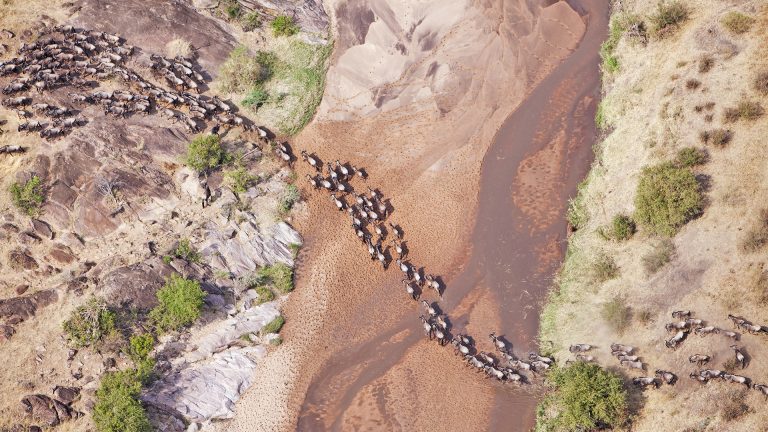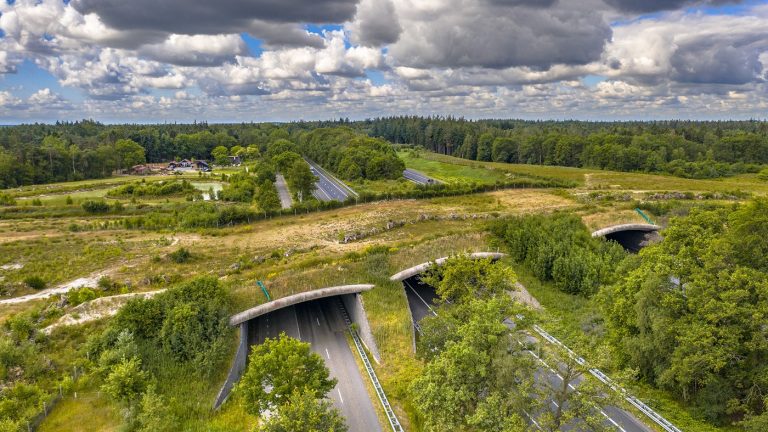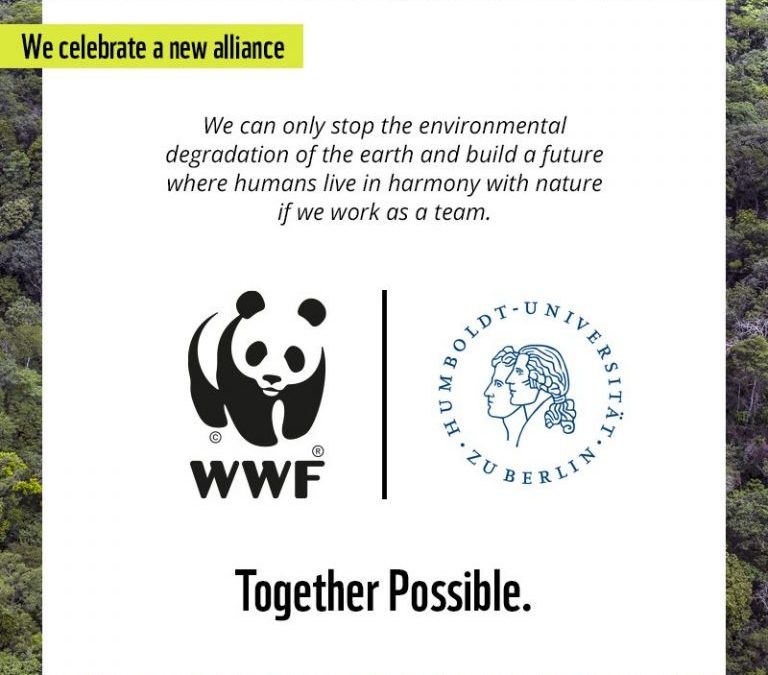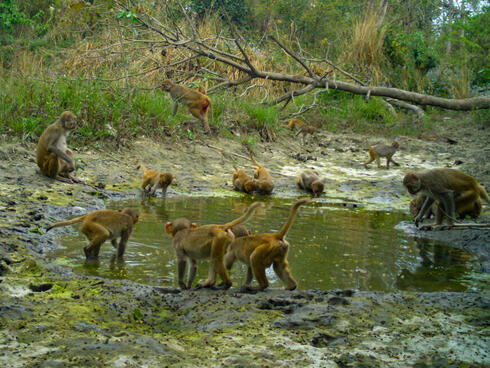Jan, 2023.- On 19th December 2022, Parties to the UN Convention on Biological Diversity officially adopted the Kunming-Montreal Global Biodiversity Framework as part of a package of decisions agreed at COP15, the UN’s biodiversity summit in Montreal, Canada. The importance of conserving ecological connectivity has been widely recognised as an important element in this new framework, including in Goal A, which seeks to ensure “the integrity, connectivity and resilience of natural ecosystems…”, in Target 2, where restoration will “enhance connectivity”, in Target 3, which seeks to ensure systems of protected and conserved areas are “well-connected” and Target 12, which seeks to increase connectivity of ”green and blue” spaces in urban areas.
UNEP-WCMC’s Nature Conserved team explains its importance, ways that we can protect and restore it and how we can measure it.
Ecological connectivity sustains species, ecosystems and human livelihoods
The Convention on Conservation of Migratory Species of Wild Animals (CMS) defines ecological connectivity as “the unimpeded movement of species and the flow of natural processes that sustain life on Earth”. It is an emerging conservation practice that protects the dynamic aspects of nature, especially in a time of climate change. Connectivity conserves critical species movement ecology, such as allowing fish to travel up streams to spawn, facilitating the seasonal migration of whales, butterflies and birds and providing the adaptive space for plants to spread across a landscape in the face of changing environmental conditions. As human activities and land uses have increasingly fragmented terrestrial and aquatic habitats, connectivity has been dramatically reduced. For instance, roads and fences are some of the more obvious physical barriers to movement, but also land conversion due to deforestation. These developments impact species and ecosystems directly, and diminish their resilience to threats, including their ability to adapt to climate change. Loss of ecological connectivity through environmental degradation also impacts the livelihoods and well-being of those that live within affected areas, including through loss of ecosystem services such as pollination, clean water, soil regeneration and flood mitigation.
Restoring ecological connectivity
There are many ways in which connectivity can be protected and restored. On land, connectivity can be enhanced through conserving and restoring stretches of habitat to connect remaining patches, creating ‘ecological corridors’. Alternatively, connectivity can be supported by ‘stepping-stones’ for species to travel between to reach other larger patches, or by improving the permeability of the landscape matrix for the species through initiatives such as sustainable agriculture and agro-forestry. In an urbanised environment, ecological networks can be supported by enhancing green space networks of urban parks. In the ocean, marine migration pathways may be protected via management of fishing activities and shipping lanes.
Successful connectivity conservation approaches can span multiple cultures, geographies, and patterns of governance and ownership. Many examples of connectivity conservation exist to build from. Ambitious efforts at the continental scale include the Yellowstone to Yukon Conservation Initiative in North America, representing a partnership of over 460 groups and an area spanning 3,400 km, which over 25 years has seen an 80% rise in protection and over 100 wildlife road crossings being established. In the KAZA landscape in Southern Africa, communities are managing their lands in wildlife dispersal areas to allow large scale movement of megafauna across the landscape, whilst benefiting from the wildlife economy. Panthera’s Jaguar corridor initiative between Mexico and Brazil seeks to protect jaguars across their entire 6 million km2 range, and the Great Eastern Ranges and the Gondwana Link initiatives in Australia are also working to conserve and re-establish connectivity on a grand scale. The Wildlife Connect Initiative is another example of a large connectivity approach, currently working in four pilot landscapes in Africa (Southern Kenya-Northern Tanzania), Asia (Central Indian Landscape), Europe (Carpathians), and Latin America (Pantanal-Chaco) with the aim of replicating best-practices that protect, manage, and restore ecological connectivity that contributes to the long-term viability of wildlife and people
At the national level, examples of connectivity initiatives include the Barandabhar Forest Corridor in Nepal, designed to support populations of Indian Rhinos and Bengal Tigers, and Bhutan’s ecological corridors that cover 9 per cent of the country and connect its protected areas into a single ecological network, enabling large mammals such as tigers and leopards to move freely within their natural ranges. And in India, a Coalition for Wildlife Corridors is bringing people and organizations together to advance connectivity conservation and Tanzania has recently published their national wildlife corridor plan.
What’s next? UNEP-WCMC’s Connectivity Conservation Focal Initiative
The importance of ecological connectivity to achieving enhanced biodiversity conservation outcomes is strongly reflected in the work of the Kunming-Montreal Global Biodiversity Framework, as well as the Convention on Conservation of Migratory Species of Wild Animals, setting ambitious global goals for the coming decade.
With continuing habitat loss and fragmentation and climate change driving species range shifts, there is an urgent need to protect and restore ecological connectivity. There is also a need to support countries to plan and to monitor progress. Currently, important data gaps exist in relation to monitoring key aspects of connectivity for migratory species and coastal/marine and inland aquatic ecosystems.
Reflecting these needs, UNEP-WCMC’s Connectivity Conservation focal initiative has launched its work to support global efforts to enhance ecological connectivity, working with key partners World Wide Fund for Nature, International Union for the Conservation of Nature and Centre for Large Landscape Conservation (WWF, IUCN, CLLC). Over the next five years, UNEP-WCMC’s work will be focused around four areas:
- Supporting the development of suitable metrics for measuring both structural and functional connectivity that can be applied by countries to assess progress towards national and international conservation commitments, including the relevant targets within the Kunming-Montreal global biodiversity framework both on land and at sea.
Supporting governments and other actors to identify and monitor ecological corridors, supported by the new World Database on Ecological Corridors
Helping governments, communities, landholders and other key stakeholders incorporate ecological connectivity into spatial planning, for example through guiding infrastructure planning, and through improving how ecological connectivity is assessed in transboundary conservation planning.
Collating available data and knowledge on migratory species for example through a new State of the World’s Migratory Species report that is being produced for the Convention on Migratory Species.
By supporting countries to identify, document and map ecological corridors and to integrate ecological connectivity into spatial planning across land and sea, UNEP-WCMC hopes to ensure the delivery of positive outcomes for nature and people.
Source: UN WCMC




